By Alain Rancourt
Year after year, the various NIOSH reports show us that accountability deficiencies are among the “NIOSH 5,” the contributing factors in firefighter deaths.
According to Project Mayday in 2021, 68% of commanding officers did not have accountability in their possession at the time of a Mayday. Imagine the stress experienced by these officers!
- Fireground Communications and the NIOSH 5
- Firefighter Maydays: Why Does NIOSH Keep Making the Same Recommendations?
- Adding Tools to the Accountability Toolbox, Part 1 | Part 2
Contrary to what many think, fireground accountability is everyone’s responsibility, regardless of whether you are a volunteer or full-time department. For career department, it’s often accomplished with a riding list at the beginning of the shift and in the trucks. For some volunteer departments, the arrival of firefighters on scene is sometimes done with their personal vehicle or aboard fire department rigs.
If the firefighters are riding the engine or truck, each member can put his name tag on the board at his riding position and that board will be given by the officer or any firefighter on board at the command post.
If they arrive with their personal vehicle or there is no command post established and no officer on scene, the accountability can simply be started by bringing their ID tag to the operator or hanging it on a hook-and-loop fastener or a carabiner inside the door on the driver’s side or at the pump panel.
When the first officer arrives on scene, he simply must get the tags from the pump/operator and start his accountability at the same time as he takes command.
The firefighters must understand and respect that the command post act as a barrier for the fire scene. Nobody enters or leave the scene without advising the command post. All personnel must report to the command post to receive their assignments and be accounted. This allows the commanding officer to ensure that personnel have all required protective equipment, including a portable radio. The radio is an integral part of the accountability in the event of the need to trigger a Mayday, as we will see in an experience recounted below.
The incident commander (IC) in charge should use a command board to track location and assignments of resources. This officer should have all the riding list and/or collect the tags of all personnel on scene.
Of course, having accountability on hand is important, but it is even more important that the commanding officer knows where each of the units are operating on scene all the time.
The best accountability system is one in which there is a solid command structure supported by solid standard operating procedures (SOPs) and disciplined officers who will keep the integrity of their crew for the duration of the call.
If you have an accountability issue for a fire alarm with nothing showing, obviously you will have a bigger problem with a confirmed fire. But what about the responsibility of the first-level officers (lieutenants/captains) and firefighters?
The chain of accountability
The Gatineau fire department, Quebec, Canada is a career fire department made up of 250 firefighters and officers in the operations division located in eight fire stations.
Our accountability system has seven steps that must be performed on each shift. It can be compared to a chain in which several links have a role to play.
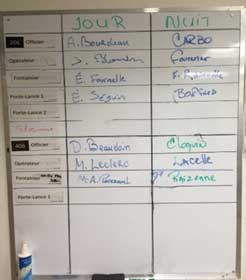
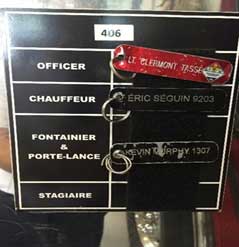
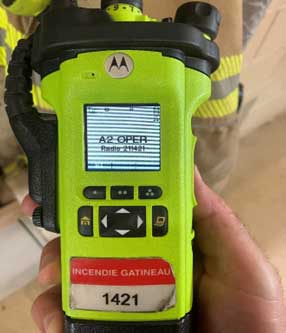
The first step for the staff is to consult the board of assignments when arriving at the station to know their position (driver, nozzle firefighter, etc.) (Photo 1.) Thereafter, each member affixes their ID tag on the passport inside the door of the vehicle on the driver’s side (Photo 2).
In the third step, during the installation of their protective clothing on the rigs, the personnel must take possession of the radio assigned to the designated position, which includes an ID number programmed at the position occupied (Photo 3).
(This number will have an important role if the emergency button is triggered to signal a Mayday, as we’ll see below.)
Now comes the task of the station officer to register all his staff in the computer system with information such as name, position occupied, and the vehicle he is riding (pumper, ladder etc.)
The radio number will be automatically generated by the computer system inside the list related to the designated position. This task must be completed before the start of the shift (07:00 a.m.)
After the firefighters and station officer have performed their duties, the battalion chief (photo 4) prints the assignment for all eight stations within the first 15 minutes of the start of the shift and reviews it to ensure there are no errors. When everything is in order, he prints a copy that he will place inside the command case on board his vehicle (photo 5).
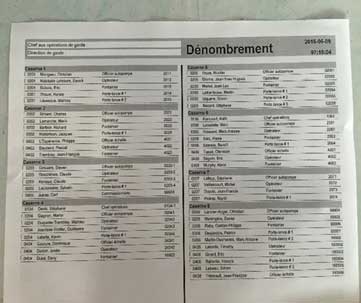

On scene
On the intervention scene, we place the assignment list, the identification placards, and a radio tuned to frequency 16 on a table with the command case. This radio will be used if a Mayday call occurs.

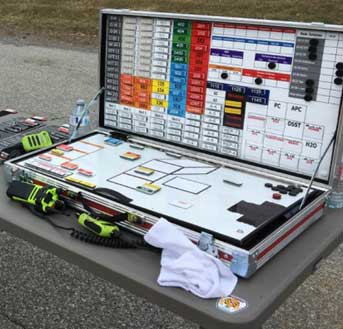
Lesson learned
In the spring of 2021, we were called for a fire in a community center that quickly spread inside given the interior cladding made of pine planks. When I arrived as third chief of operations, my role was (as procedure dictates) to act as safety officer. I noted that all the steps of our accountability system (the chain) had been completed according to our SOP. After seeing the locations of the crews on the command case, I headed out to run a 360 of the building.
A few moments later, a Mayday was declared following a partial collapse blocking the exit of the building where the team had been mandated to carry out some verification. The officer in charge of the crew proceeded exactly as our procedure requires, by activating the emergency button on his radio.
The 911 dispatcher received the signal with the ID number of the radio, confirmed with the radio carrier their distress situation and advised command. It is at this moment that we entered the statistics of Project Mayday, namely in the sense that 36% of Maydays are not heard on the first call. The seventh link in our chain had just broken. But why?
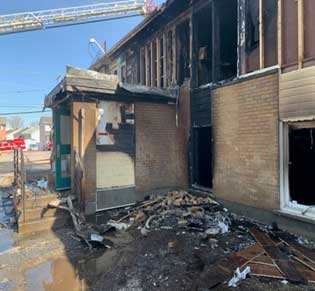
We work with two radios at the command post, one serving the commanding officer on the tactical band to communicate with the crews and the other for communications with the 911 center held by the second chief in charge of accountability. When the 911 contacted him to mention the Maydays (as stipulated in our procedure), he did not have the reflex to take the radio tuned to the emergency frequency placed in front of him on the table (channel 16) but instead tried to communicate with the officer in distress to ask him for his LUNAR ( location, unit, name, air supply, resources needed ) with the radio assigned to the tactical band—a band that the officer no longer has access to since his radio had automatically transferred to the frequency of emergency.
Fortunately, the unsuccessful attempt to communicate with the team from the moment the Mayday was triggered until the team found an alternative exit assisted by an outside crew lasted 2:30 minutes without serious consequences.
*
As good as our intentions were to determine in our procedure the location of the emergency radio at the command post, we realized that the radio must be in one of the radio pockets of the second officer in charge of the accountability to minimize the risk of missing the distress call.
Since we (myself and the division chief) had only practiced once in the previous months, this event showed us that it was not enough to detect this flaw in our procedure despite having this procedure in place for over three years.
If all the battalion chiefs had practiced the Mayday procedure during simulation with their teams, we would surely have noticed its weakness. This demonstrates the importance of practicing Mayday scenarios with our teams.
Project Mayday says that only 23% of commanding officers had practiced Mayday management before experiencing a situation on a fire scene. Would you be part of this statistic if this happened to you?
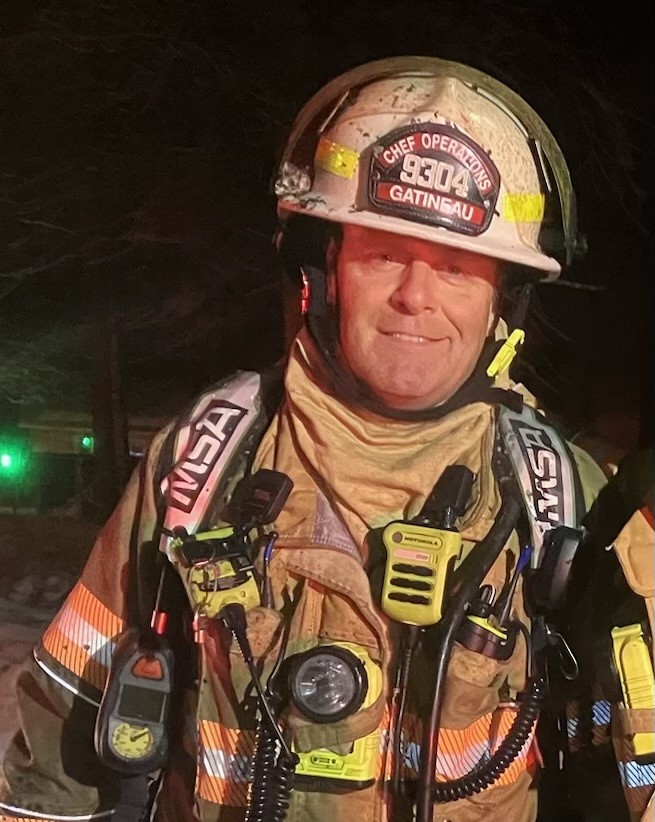
Alain Rancourt has 34 years in the fire service and is currently a battalion chief assigned to station 4 in the downtown area with the Gatineau Fire Department, Quebec Canada. He is also an instructor and speaker in fireground tactics and incident command for various fire departments, as well as for the Quebec fire chiefs convention. He’s has also participated in FDIC International for the past 15 years.

